Estimated reading time: 9 minutes
Bathing your kitten can seem like a tough task, right? You’re not alone if you’re worried about it. Cats are great at keeping clean on their own, but sometimes, they need a little help from us.
That’s when giving your furry friend a bath in the tub becomes a must-do, even if it sounds challenging. But don’t sweat it! With the right tips, you and your kitten will get through bath time like pros.
This handy guide delves into how often and why you should bathe your kitty, providing tips on techniques and alternatives to make this task less daunting. Ready to dive in?
Key Takeaways
- Bathing your cat is important for keeping their fur clean and free of matting, preventing skin irritation, and controlling fleas and allergies.
- How often your cat needs a bath depends on their age, comfort levels, and specific needs. Long-haired cats typically require a bath every few months to keep their fur clean and prevent matting, while hairless breeds may need more frequent bathing to maintain hygiene.
- When bathing your cat, use lukewarm water with gentle, pet-friendly shampoo. Approach your cat calmly, protect your hands with a towel or washcloth, and take breaks if needed. Reward your feline friend with treats after the bath as positive reinforcement.
- If giving your cat a traditional bath is difficult or stressful, there are alternative options like using dry shampoos and wipes or seeking professional grooming services. Hairless breeds may have specific considerations for their bathing needs.
The Importance of Bathing Your Cat
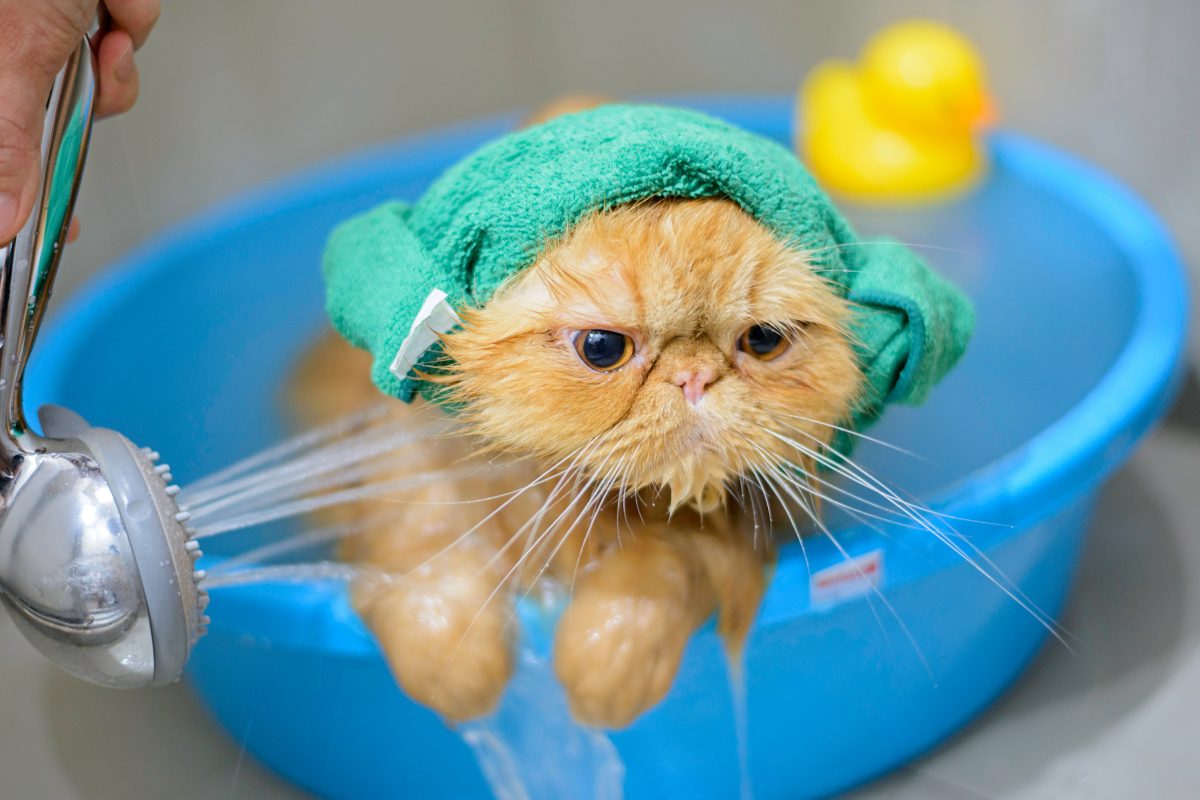
Keeping fur clean and free of matting
Cats with curly or long hair need daily brushing. This stops their fur from tangling or matting around the ears and underarms. A bath helps to wash away dead hair, making your cat’s coat shine and preventing any skin issues.
Preventing skin irritation
Bathing your cat aids in stopping skin annoyance. A bath can help to clean off dirt on the fur that may lead to itchiness. Make sure you use a mild and pet-friendly shampoo. This shampoo will not harm the cat’s skin.
Also, don’t bathe your cat too much. Too many baths can take away oils from the skin of cats and cause dry, itchy skin.
Controlling fleas and allergies
Cats can pick up fleas from the outdoors. Fleas may bite your cat and cause itching. Some cats have allergies to flea bites. This makes them scratch more and may lead to skin infections.
Bathing your cat helps a lot in combating this issue.
Use a special, medicated shampoo that kills fleas if you find any on your cat’s fur. For cats with allergies, baths help clean allergens off their skin. This will lessen their itchiness and discomfort.
Call your vet for advice on the best products to use or if symptoms persist after bathing.
How Often Should You Bathe Cats?
Depends on age, comfort levels, and needs
The frequency of bathing your cat depends on their age, comfort levels, and needs. For example, long-haired cats should be bathed every few months to prevent matting. Hairless breeds may need more frequent bathing to keep their skin clean.
It’s important to consider your cat’s individual preferences and comfort with water before deciding how often they should be bathed. Your veterinarian can also provide guidance based on your cat’s specific needs.
Long-haired cats should be bathed every few months
If you have a long-haired cat, it’s important to give them a bath every few months. Long fur can easily become tangled and matted, which can be uncomfortable for your cat. Bathing helps to keep their fur clean and free of tangles.
It also prevents skin irritation that can occur when dirt and debris build up in their coat. Regular bathing is especially important for long-haired cats because their fur is more prone to collecting dirt and oils.
Hairless breeds may require more frequent bathing
Hairless breeds of cats, like the Sphynx, may need to bathe more often compared to other cats. This is because they secrete an oily residue that can stain fabrics. Regular bathing helps to keep their skin clean and healthy.
However, it’s important to note that not all hairless breeds are the same, so consulting with a veterinarian about the specific bathing needs of your cat is always recommended.
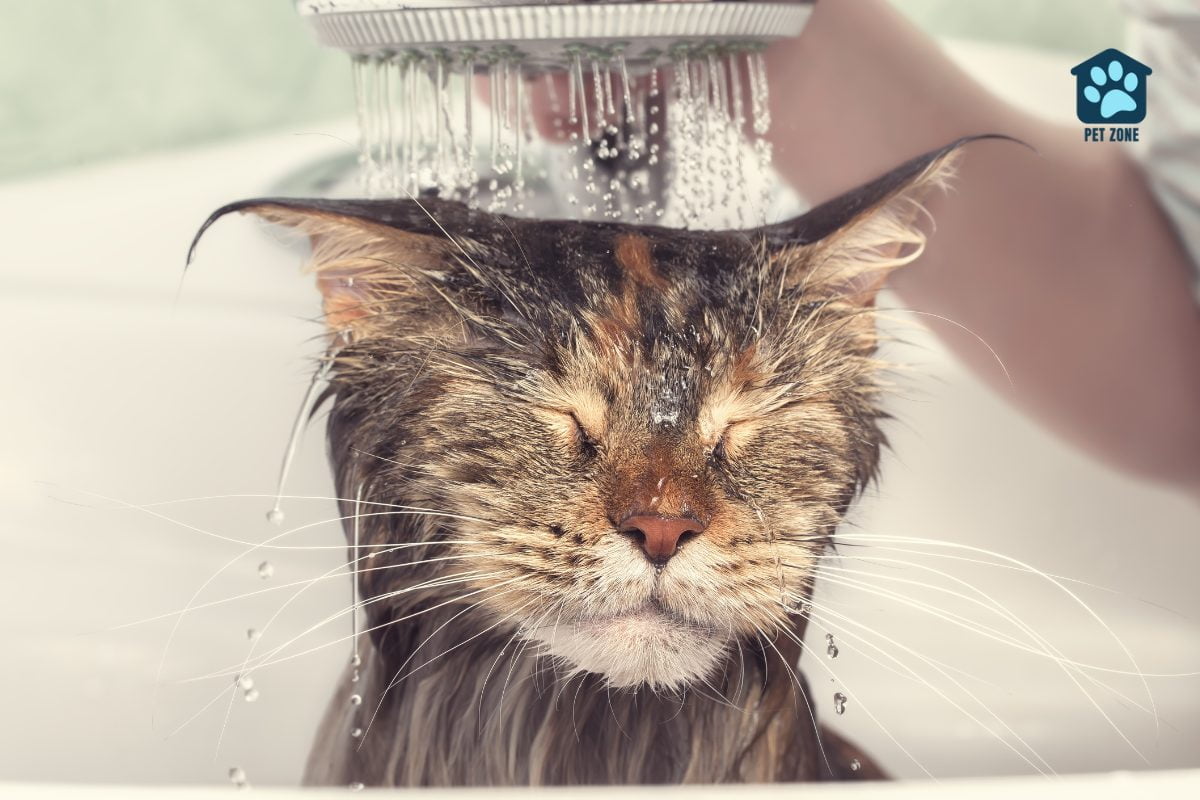
How to Bathe Your Cat
Have proper supplies ready
Before you bathe a cat, it’s important to have all the necessary supplies ready. This includes lukewarm water, gentle cat shampoo, a towel or washcloth to protect your hands, and some treats as rewards.
Having these supplies prepared in advance will make the bathing process smoother and more efficient. Remember to keep everything within reach so you can focus on safely bathing your feline friend without any interruptions.
Use lukewarm water and gentle pet-friendly shampoo
When bathing your cat, it’s important to use mildly warm water and a gentle pet-friendly shampoo. Lukewarm water will help keep your cat comfortable during the bath and prevent them from getting too cold or too hot.
Using a shampoo specially formulated for cats will ensure that their skin is not irritated and their fur remains healthy. Avoid using human shampoos as they can be harsh on your cat’s sensitive skin.
If you’re looking for a great hypoallergenic, cat-friendly shampoo, check out our recommendation!
This kitty shampoo is free of fragrances, sulfates, colorants, and harsh chemicals that irritate sensitive cat skin, making this a great cat shampoo for sensitive skin.
Add this shampoo to your cat supplies kit so that you always have your premium cat shampoo on hand when you need it.
- Hypoallergenic
- Made with high-quality natural ingredients
Remember, always read the instructions on the shampoo bottle and follow them accordingly when bathing your furry friend.
Calmly approach and handle your cat
Approaching and handling your cat during bath time is crucial for a successful experience. Make sure to approach your cat calmly and speak in soothing tones. Gently handle your cat, providing support under their chest and hindquarters.
Be cautious and take breaks if needed, especially if your cat is showing signs of stress or discomfort. Use a towel or washcloth to protect your hands from scratches. Remember to reward your furry friend with treats after the bath as positive reinforcement!
Use a towel or washcloth to protect your hands
To protect your hands while bathing your cat, it’s a good idea to use a towel or washcloth. This will help you avoid any scratches or bites from an anxious or scared cat. Simply wrap the towel around your hand or hold the washcloth securely to create a barrier between your skin and your cat’s claws.
This way, you can confidently handle and bathe your cat without worrying about getting hurt.
Be cautious and take breaks if needed
During the bathing process, it’s important to be cautious and take breaks if needed. Remember that cats can become stressed or anxious during baths, so it’s crucial to go at their pace and not rush the process.
If your cat starts to show signs of distress or becomes too agitated, take a break and try again later. It’s also essential to ensure their safety by using lukewarm water, pet-friendly shampoo, and protecting your hands with a towel or washcloth.
By being patient and mindful of your cat’s comfort level, you can make bath time a more positive experience for both of you.
Reward with treats after bathing
After bathing your cat, it’s important to reward them with treats. This helps create a positive association with the experience and encourages good behavior for future baths. Treats can be given immediately after the bath while your cat is still wet or once they are dried off and feeling more comfortable.
Choose their favorite treats or special ones reserved specifically for post-bath rewards. By providing treats after bathing, you’re helping your cat feel happy and rewarded, making bath time a little less stressful for both of you.
Alternatives to Bathing
Dry shampoos and wipes
If giving your cat a traditional bath is difficult or stressful, there are alternatives you can try. Dry shampoos and wipes are convenient options for keeping your cat clean between baths.
Waterless shampoos come in powder, spray or foam form and can be massaged into your cat’s fur to absorb oils and odors. Wipes, on the other hand, are pre-moistened cloths that you can use to wipe down your cat’s coat.
These products are great for quick touch-ups and spot cleaning. Just make sure to choose ones specifically formulated for cats to avoid any potential skin irritation.
Professional grooming services
If you don’t feel comfortable bathing your cat yourself or if your cat requires specialized grooming, professional grooming services can be a great option. Professional groomers have the experience and knowledge to handle cats of all temperaments and coat types.
They can provide services like brushing, mat removal, nail trimming, and even specialized treatments for skin conditions or fleas. It’s important to choose a reputable groomer who uses pet-friendly products and practices gentle handling techniques.
Regular visits to a professional groomer can help keep your cat’s coat healthy and free of mats while ensuring their overall well-being.
Special considerations for hairless cats
Hairless cats, such as Sphynx cats, have special considerations when it comes to bathing. Due to their lack of fur, they produce more oils on their skin. As a result, they may need more frequent baths compared to cats with fur.
It’s recommended to bathe hairless cats about once a week to keep their skin clean and free from dirt and grime buildup. However, each cat is different, so it’s important to observe your cat’s needs and consult with your veterinarian for any specific recommendations or concerns regarding the frequency of bathing for your hairless cat.
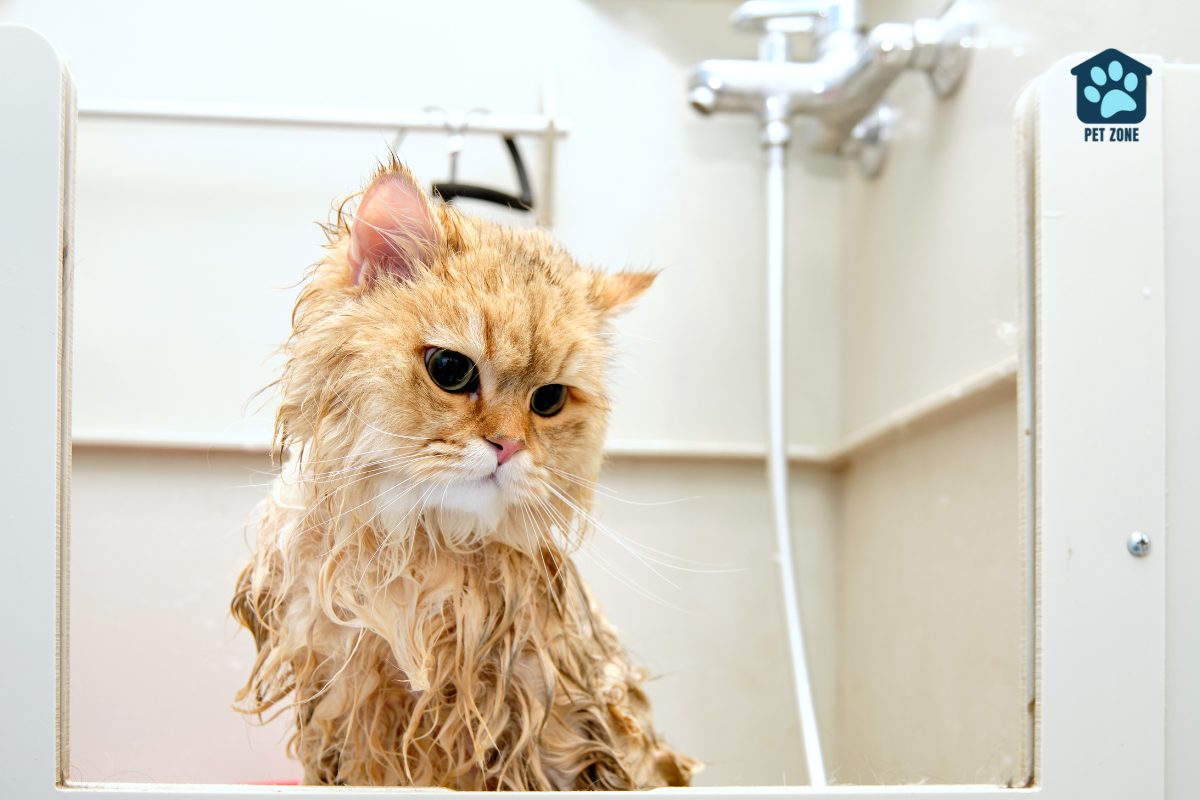
Conclusion
The frequency of bathing your cat depends on their age, comfort levels, and needs. Long-haired cats should be bathed every few months to prevent matting, while hairless breeds may need more frequent bathing.
Alternatives like dry shampoos and professional grooming services can also help keep your feline friend clean. Remember to approach bathing calmly and reward with treats afterwards!
As an Amazon Associate I earn from qualifying purchases.
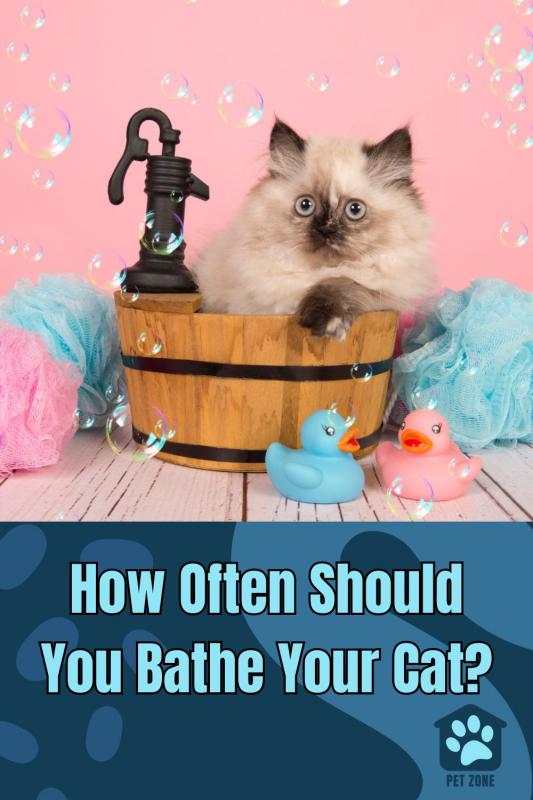


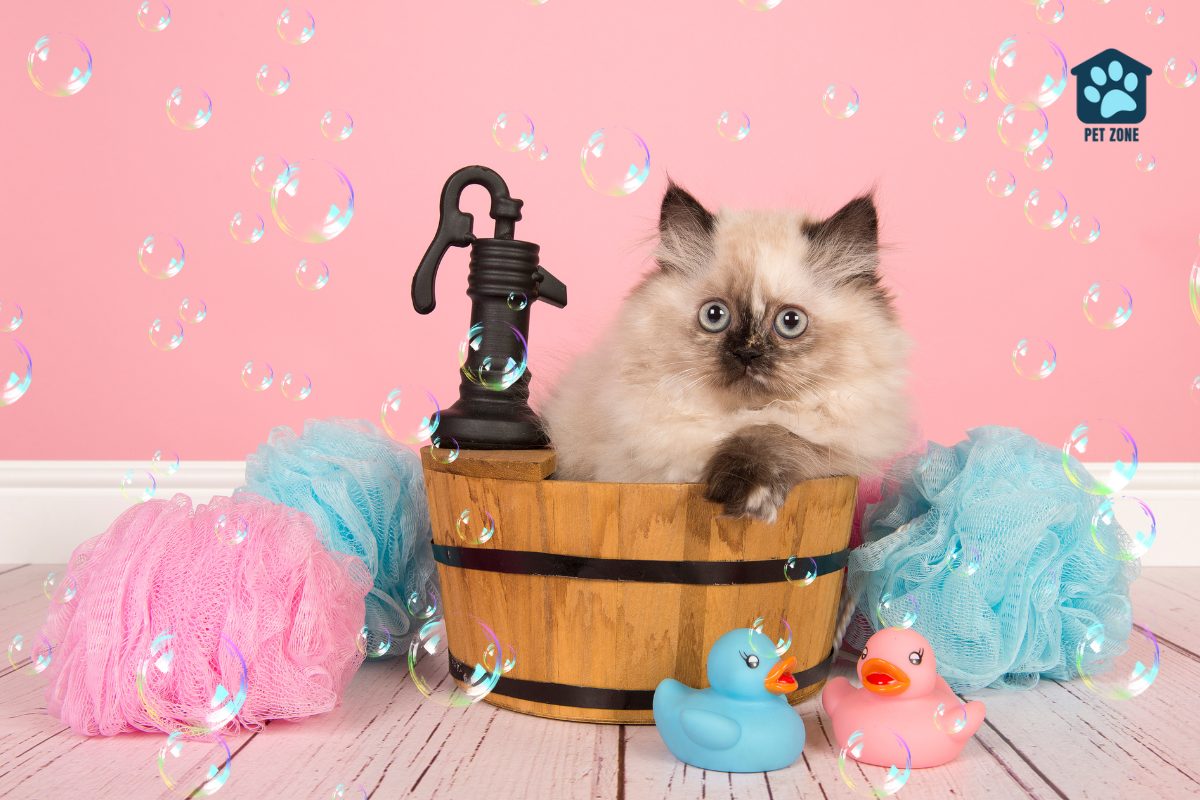
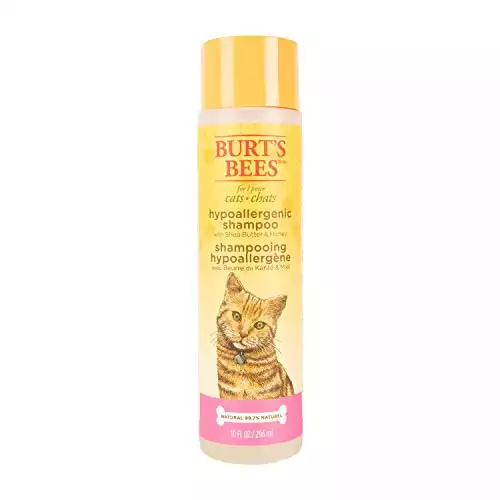
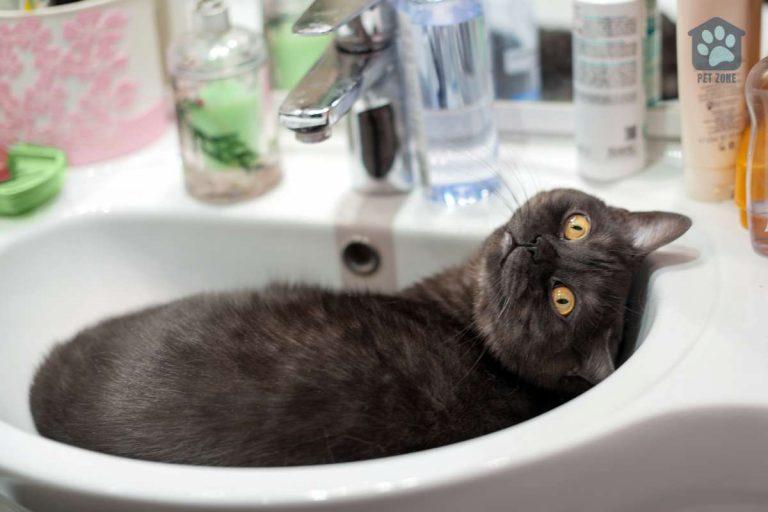





We wash our cats once every few weeks. One tip I have is washing your cats early on while they are still kittens. It’s a lot harder to start when they are adults.
Thank you for this information that I really need. I’m lazy about bathing my cats because they don’t want to be bathed either.
I had no idea I was supposed to bathe my cat! Thanks for the info and it looks like the little guy has a bath on his schedule today.
The tips in this post for bathing a cat will be pretty helpful for cat owners. Would love to own a cat for myself and if you create a post on the essential tips for new cat owners, it’d be pretty awesome!